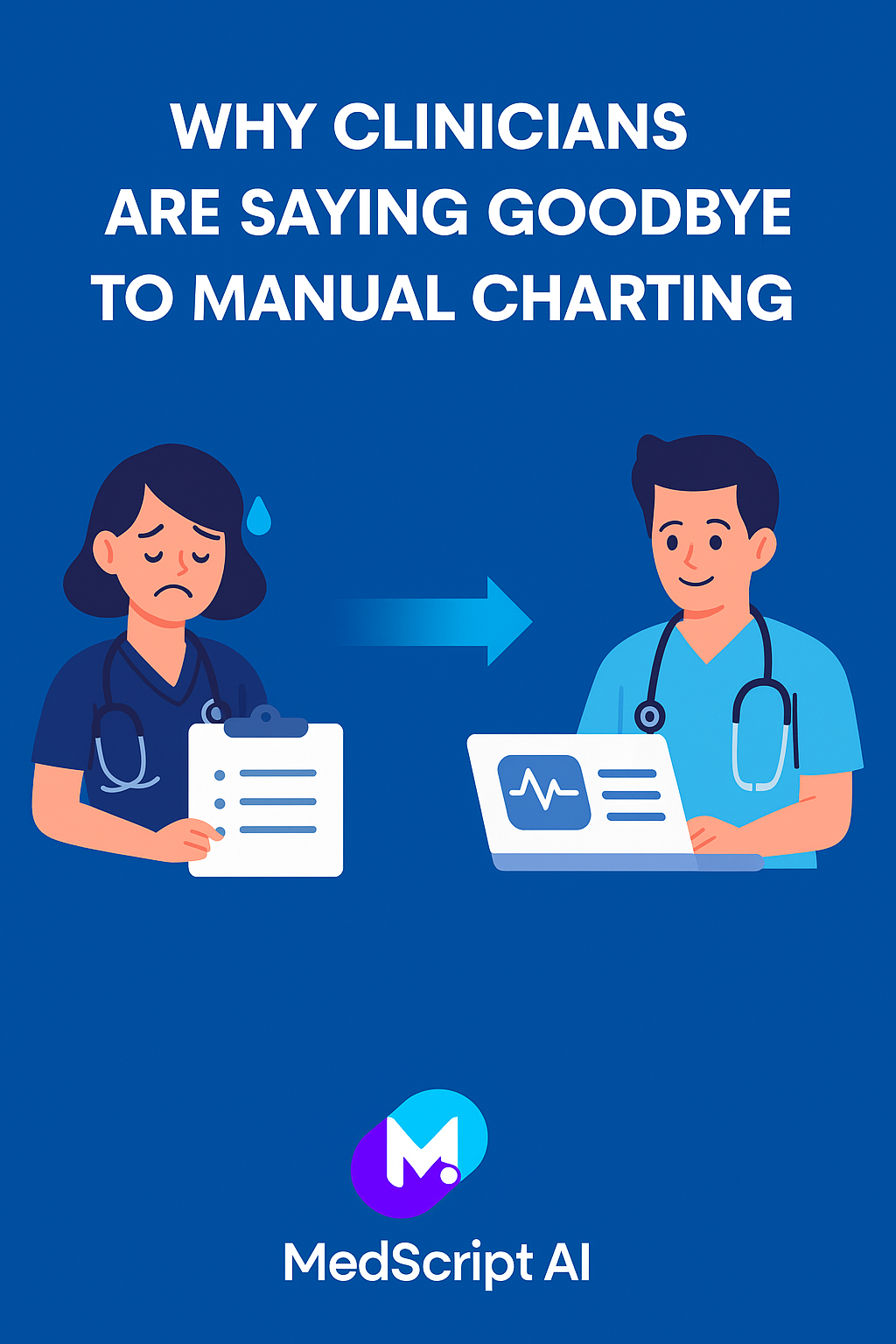If you talk to any physician about their least favorite part of the job, documentation is usually near the top of the list. Manual charting typing or dictating detailed notes after every patient encounter—can swallow hours of the day and often creeps into evenings and weekends but times are changing. More clinicians are turning to AI documentation tools to lighten the load and bring the focus back to patient care.
Here’s why:
The Hidden Costs of Manual Charting
Manual documentation doesn’t just eat time—it comes with real consequences:
- Burnout: Spending 2–3 hours daily charting increases stress and fatigue.
- Errors: Rushed notes after clinic hours can lead to omissions or inaccuracies.
- Reduced Face Time: When clinicians are busy typing, patient relationships suffer.
- Lost Revenue: Delayed documentation slows billing cycles and payments.
Over time, these hidden costs can impact both job satisfaction and a practice’s bottom line.
The AI Alternative
AI-powered scribing tools are designed to solve these exact problems.
They:
✅ Listen to conversations in real time
✅ Generate structured clinical notes automatically
✅ Integrate with your EHR
✅ Learn your style and preferences over time
Instead of manually typing, clinicians simply review and approve completed notes—saving hours every week.
Real-World Example
One family medicine group using AI scribing reported:
- 75% reduction in after-hours charting
- 40% improvement in patient satisfaction scores
- Fewer documentation-related billing delays
The benefits aren’t just theoretical—they’re transforming daily workflows.
Ready to Reclaim Your Time?
If you’re tired of late nights catching up on notes, you’re not alone. AI documentation tools like MedScript AI are helping clinicians get back to what matters most: caring for patients
